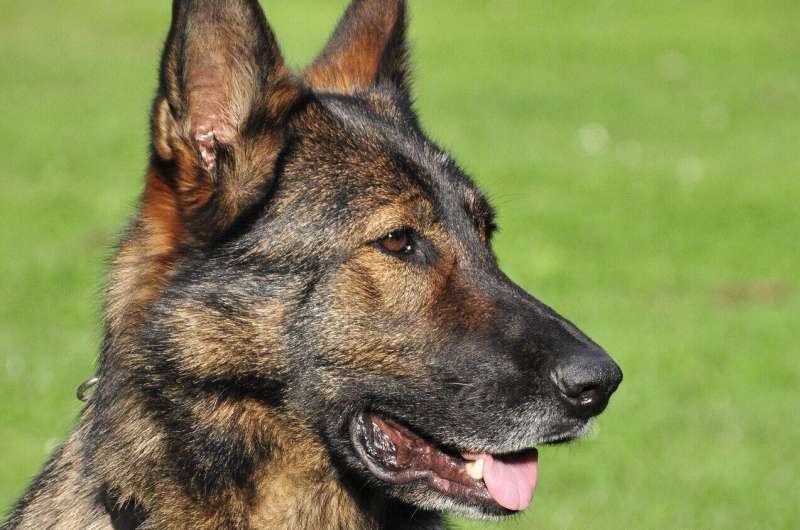Why can't we replace sniffer dogs with electronic noses?

Compared to other senses, our sense of smell is often overlooked. Our noses can alert us to risks such as rotten food, gas leaks and burning toast. But for advanced tasks such as detecting bombs or contraband, or diseases such as cancer, we often rely on the superior olfactory ability of dogs.
Training animals takes time, and their work can be arduous and even dangerous. Given our increasing electronic acumen, why can't we develop electronic noses instead?
According to Roque, assistant professor of Biomolecular Engineering at the NOVA School of Science and Technology in Portugal, the concept of e-noses has been around since the 1980s.
"Devices that mimic the olfactory system typically have a chamber representing the nasal cavity, and sensors, the olfactory receptors," she explains. Complex mixes of odorants entering the chamber trigger changes to the physico-chemical properties of the sensors, and these changes are converted into electronic signals.
The chemistry of scents
Smells are essentially detectable thanks to volatile organic compounds (VOCs). These are small molecules that possess a high vapor pressure, meaning they easily evaporate into a gaseous state.
When animals encounter a smell, they typically know which physiological and behavioral response, such as fear or arousal, is most appropriate. But an e-nose must be trained on data sets of VOC samples to learn how to match smells to their source material.
"Imagine training an e-nose to distinguish between two brands of coffee—A and B. You need to collect sensor signals for several samples of coffee A, and several samples of coffee B," adds Roque. This means that, like sniffer dogs, e-noses need a lot of training to be useful.
"In theory, e-noses can be trained to smell any VOC sample. Several examples of a particular smell could teach the system to recognize the associated signal pattern," notes Roque. "E-noses could also possibly detect new VOCs without prior training, but this is currently more realistic for sensors that are highly selective for particular VOCs or VOC classes."
Detecting disease
As the coordinator of the SCENT project, Roque developed a new gel sensor capable of detecting signs of disease. The gel alters its properties in the presence of certain VOCs, and algorithms use these signature responses to catalog different pathogens.
The e-nose was able to predict the presence of disease-causing microbes within a sample to a high degree of accuracy and precision. They also discovered that only 18 VOCs enabled the e-nose to identity pathogens with a 77% accuracy and up to 100% precision.
"Currently, detecting microbial infection in a clinical setting takes 24–36 hours, and for slow-growing bacteria up to a week. By detecting bacterial VOCs as infection biomarkers, e-noses speed this up, improving clinical outcomes," explains Roque.
So why are dogs still ahead by a nose?
According to Roque, some e-nose technologies are currently available in the market, such as air quality monitoring systems. But often canines outperform them.
"While it should be possible to train e-noses to smell most things that dogs can smell, dogs retain certain advantages. Their sense of smell is extremely sensitive and can identify VOCs at very low concentrations. Sensors also have shorter lifespans than dogs and are more vulnerable to humidity and temperature," remarks Roque.
Another challenge is achieving the degree of miniaturization required for mobile or autonomous e-noses, given the processing power required and the large number of validation samples that the sensors have to accommodate.
Not to mention the regulatory hurdles that also lie ahead to allow the public use of such devices.
Yet the future is bright for e-noses, says Roque. "As the technology advances, leading to faster analysis, with higher accuracy and precision, I'm sure we will soon see new e-nose applications, especially for clinical diagnostics."
Look out dogs—the robots are coming for your jobs too.
Provided by CORDIS




















